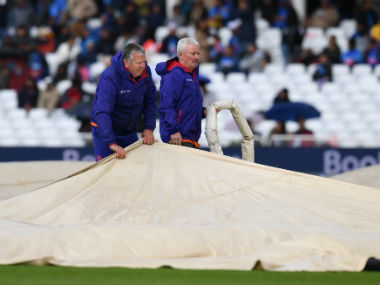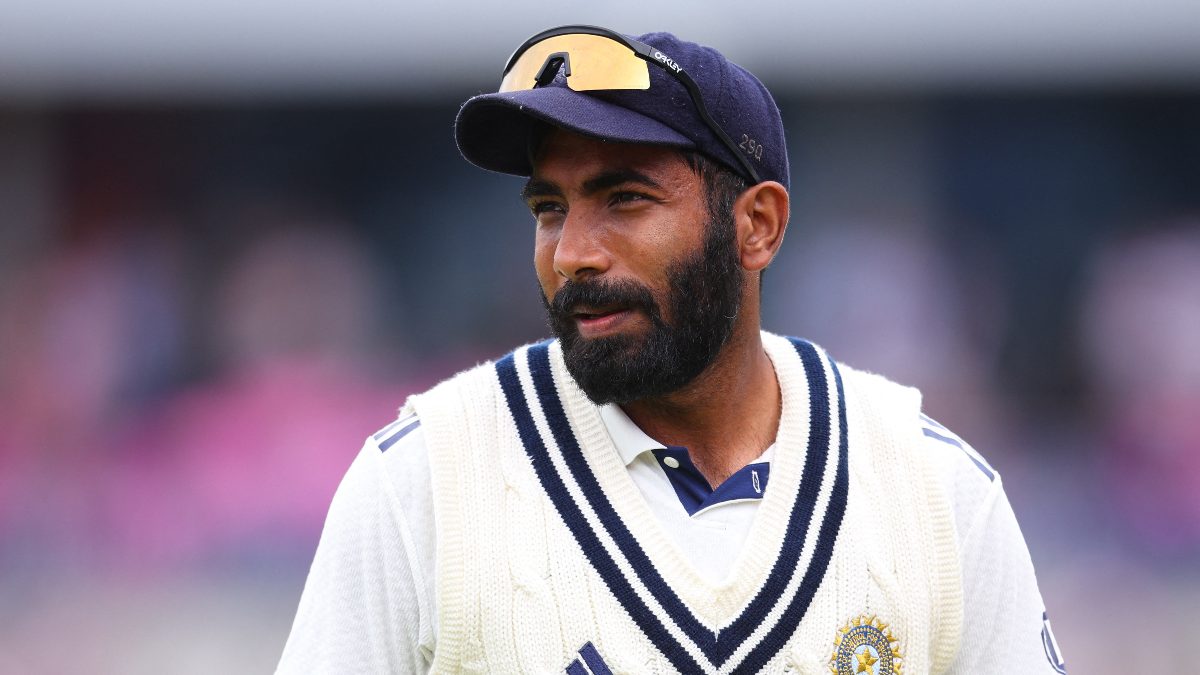Already, with four of the 18 matches thus far washed out, this edition of the World Cup has turned out to be the wettest one in history. This repeated abandonment of matches owing to wet outfield or rains has caused immense financial damage to not just the television and other media rights holders and sponsors but also to the 10s of 1000s spectators who have flocked to England from various parts of the globe. [caption id=“attachment_6811211” align=“alignleft” width=“380”] Rain and wet outfield forced India-NZ match to be abandoned on Thursday. AFP[/caption] India’s fans in particular, who have flown down from India, America, Canada, Australia, New Zealand, Europe, and the Middle East, were hit hard when India’s match against New Zealand was
abandoned on Thursday . Sadly, this might not be the end of the disruption and it remains to be seen how many more matches are affected owing to poor scheduling, primitive facilities and an apparent lack of contingency plans. In hindsight, it is unimaginable that the ICC planned a World Cup event involving 10 countries without providing for rain and such interruptions which are pretty normal in England at this time of the year. And that is the most vexing part of the whole botched-up scheduling. The last time England hosted the World Cup jointly with Ireland, Scotland, Wales and The Netherlands in 1999, they provided for a reserve day for all matches. Luckily, barring the match between India and England which was carried over to the next day, the weather gods were kind enough to ensure that rains, if at all, fell after playing hours! However, this time around, no reserve day has been provided for league matches. And this drawing up of the schedule with a kamikaze spirit had led to the India vs NZ match, Bangladesh vs Sri Lanka, South Africa vs West Indies (after 7.3 overs) and Pakistan vs Sri Lanka being abandoned. The scheduling, which is bound to cost some team or the other a place in the semi-finals, has been made worse by England’s ground facilities which are primitive and remnants of an earlier era. For instance, in the 2003 final at the Wanderers Stadium in South Africa, Indian spectators cheered with joy when a cloud burst deposited a humongous amount of rain when India were reeling against Ricky Ponting’s champion outfit. The Aussies had run up a massive total of 359 for 2 and had the Indians three down for very little in less than a dozen overs. Had the match been rained off at that stage the final would have had to be replayed from scratch the next day and Indian fans were hoping that would be the case. But in the media box, South African journalists were telling us something different. They pointed out that the Wanderers ground could take any amount of rain and further guaranteed that within 30 minutes of rains halting, the play could resume. And it did. That was the first time we realised what a world-class drainage system could really do. It is obvious that English grounds do not have anything even remotely resembling this. Even in India, at the KSCA, they have a brilliant sub-terrain gizmo called the Sub-Air system which sucks water at 37 times the speed of gravity. KSCA are so confident about the prowess of the system — which is also used at the Augusta golf course greens — that they do not even bother to cover the outfield when it rains. Only the square is covered and unless it is done extremely incompetently, play can resume within 5 to 10 minutes of rain stopping. Even Sri Lanka, which does not have such a sophisticated system, have improvised by ensuring that the whole ground is covered during rains. Many Indian grounds too similarly protect their turf. England, however, are a tragedy. Many of their grounds do not boast of any great drainage system, nor do they have the Sub-Air system in any ground. For that matter, they also do not possess any great cover facilities. They try to cover up their inadequacies by harping on tradition and the manner in which their great grandfathers handled the threat of rain since the Second World War! Under these circumstances, the ICC should have surely done one of two things: Either provided a reserve day for all matches or have shifted the whole schedule and slotted the event to run from the last week of June till the first week of August. They didn’t do either. England, meanwhile, ensured that the Ashes series against traditional foes Australia, which would be a money spinner, was held during the best part of the English summer — late July when Australia engages in practice games — till mid-September. In contrast, the World Cup rights belong to ICC and England will get only a predetermined share of the revenue along with other countries. Worryingly, rains and ICC’s unimaginative scheduling have put at risk other matches too, including the much anticipated India–Pakistan clash on Sunday. Should that game also be rained off, it will cause irreparable damage to the tournament itself. Indeed, ICC with their unbelievable indifference, have left the most important asset in their kitty at the mercy of rain gods. And considering that this event is held in England and at a time when rains could be expected to play spoilsport, the inanity of the act is of epic proportions. Certainly, heads must roll in the ICC set-up. Someone must pay for this big time goof-up which now threatens to mar ICC’s most prized event. The collective chaos which rains, poor scheduling and the lack of reserve days might unleash in the coming days might well damn the current ICC disposition for all time to come. For all the latest news, opinions and analysis from ICC Cricket World Cup 2019, click here
It is unimaginable that the ICC planned a World Cup event involving 10 countries without providing for rain and such interruptions which are pretty normal in England at this time of the year. And that is the most vexing part of the whole botched-up scheduling.
Advertisement
End of Article


)

)
)
)
)
)
)
)
)



